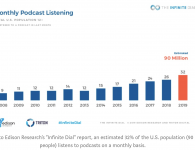
 The characteristics of digital business are dynamic, hyper-connected, and interdependent, different companies are at a different stage of its business life cycle. Re-imagining the future of digital business is exciting, but investigating the different path of business growth and digital transformation is a tough journey. How to recharge the business and unlock its performance by identifying the following “hidden spots,” deal with problems systematically and unleash business potential into a more solid form of business advantage?
The characteristics of digital business are dynamic, hyper-connected, and interdependent, different companies are at a different stage of its business life cycle. Re-imagining the future of digital business is exciting, but investigating the different path of business growth and digital transformation is a tough journey. How to recharge the business and unlock its performance by identifying the following “hidden spots,” deal with problems systematically and unleash business potential into a more solid form of business advantage?
In reality, many companies still have rigid organizational hierarchy and bureaucratic culture, their business is still the sum of pieces rather than a holistic whole. Many teams operate with an incomplete and relative small view of the business and take linear management discipline. It’s no surprise that such silo mentalities will create numerous blind spots in talent, resource, process, capacity, and capability management, and further cause failures in strategy execution. Thus, it’s important to develop high-performance leadership team with cognitive difference, complementary skills and distinctive capabilities to identify and fill blind spots and improve their leadership effectiveness.
Dark spot: Individually, negative emotions create dark spots – your fear drains energy and thwarts creativity; your ego is a mask or a costume that you wear in the great play of career or life to hide your authenticity; your envy degrades your integrity or professionalism, etc. Collectively, in the business environment, silo or bureaucratic thinking creates dark spots and generates negative energy. It’s about fear of failure; fear to get out of old habits, fear to lose the status quo. It makes people feel threatened, that’s why learning is stressful. Negative emotions create dark energy, drive misjudgment, and cause inertia to adopt the right course of action. To brighten the dark spot, learn to abide by nature and let the positive dominate the negative through continuous learning, adapting and maturing. As the society, the negative behaviors caused by negative emotions should be discouraged, organizations and society should adore and appreciate those individuals who are directed towards using their superior skills or unique abilities for driving progressive changes and making a better world.
Sweet spot: Compared to change, business transformation is definitely the more ambitious sounding term and a large scale of changes. It is like a treasure hunting journey to uncover the sweet spots and discover hidden gems for business growth. Business managers should take the intrapreneur spirit, turn the status quo upside down for dealing with”VUCA” normality via interdisciplinarity of art and science. They should practice strategic thinking by envisioning the future and clarifying the reality, keep asking themselves and others: What’s our strategic sweet spot? What’s our competitive advantage? What’s the future of business? What’s our unique competency? Etc. Organizations that are skillful at exploring the sweet spots of growth can gain long term business advantages by pushing the boundaries of a more complicated business mix that provides opportunities to create inter-business value and build differentiated business advantages. To explore these sweet spots for growth, people are encouraged to take initiatives of stepping outside of the box, seek additional knowledge and experience, and focus on the learning opportunities provided by assignment, rather than on the status quo. Digital is the age of customers. focusing on customer needs should be an easier path to identify sweet spots and grow the innovation fruits continually.
The digital transformation is now spreading rapidly to enable organizations of all shapes and sizes to reinvent themselves. It’s critical to gain a contextual business understanding, look for those critical “hidden spots,” which is not always obvious, see around the corner, read between the lines, to overcome barriers and identify growth opportunities for making a leap to reach the next level of organizational maturity.
read more at http://futureofcio.blogspot.com/ by Pearl Zhu
Cio









